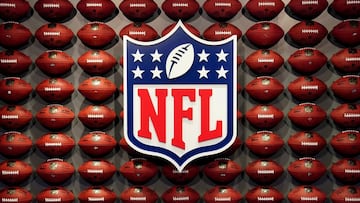Why decline a penalty in the NFL?
We are not yet halfway through the NFL season, so reviewing the game rules before the postseason madness starts to kick in is essential.

We’re only six seasons into the 2024 NFL regular season, and several teams are still on the hunt for that elusive playoff seat. But it’s an excellent time to brush up on our NFL knowledge before we reach the postseason.
If you aren’t too familiar with the rules of professional football, let’s look at penalties and analyze why a team might decline a call in their favor.
Super Bowl 2024 49ers - Chiefs live online: stats, score, latest updates…
What are the consequences of each flag?
When flags are thrown, a penalty has been called against one of the two sides on the field. Penalties can be called against the offensive and defensive teams and can vary in importance and severity of punishment.
The heaviest penalties are pass interference and personal foul penalties. Personal fouls are generally called when the referee spots a potentially dangerous play, like a blow to the head or a low block. A personal foul is a fifteen-yard penalty from the end of the play and an automatic first down.
P.I. is a killer when called against the defense
Pass interference can be called on the defensive or offensive team and is generally the “flag” that can earn the offensive team the most yards. If the refs throw a flag for P.I., the ball is marked from the spot of the foul if committed outside 15 yards. If engaged within fifteen yards from the line of scrimmage, the ball will be advanced 15 yards, and it’s an automatic first down. If the offensive player commits a pass interference play, the ball is placed 10 yards behind the previous spot.
The penalty for holding is next on the severity list, especially against the offensive side. Holding calls on the offense end result in a penalty of ten yards from the spot of the foul, and the down stays the same. If the defense is called for holding, it’s a five-yard penalty from the line of scrimmage and an automatic first down for the offense.
Off-sides and false starts are the most common flags
Off-sides and false starts are five-yard penalties and are called against the defense when a player is past the line of scrimmage when the ball is snapped. This will move the ball up five yards from the line of scrimmage, and the down remains the same unless the five yards are enough to give the offensive team a first down.
A false start is a pre-snap penalty whistled against the offense when a player flinches or makes any illegal move before the ball is in play. The offense is penalized five yards from the line of scrimmage.
So why decline?
But what happens when the penalty doesn’t favor the team on the receiving end of the foul? They decline it.
When would a team decline a penalty? On the offensive end, a team would decline a defensive holding call if the result of the play gets them further down the field than the penalty would. A pass interference call would be declined if the receiver catches the pass regardless of the penalty and advances the ball farther from where the foul was committed. The offensive team generally waives off an off-side call when the resulting play ends with a first down.
Defenses generally decline penalties less, but you do see it, especially if the infraction takes place on third or fourth down. The defensive side will generally decline a holding or pass interference call if the offensive team faces a fourth-down situation where they would have to punt or kick a field goal.
Coaches are usually prepared for any game situation and know exactly when, where, and why to decline a penalty.





